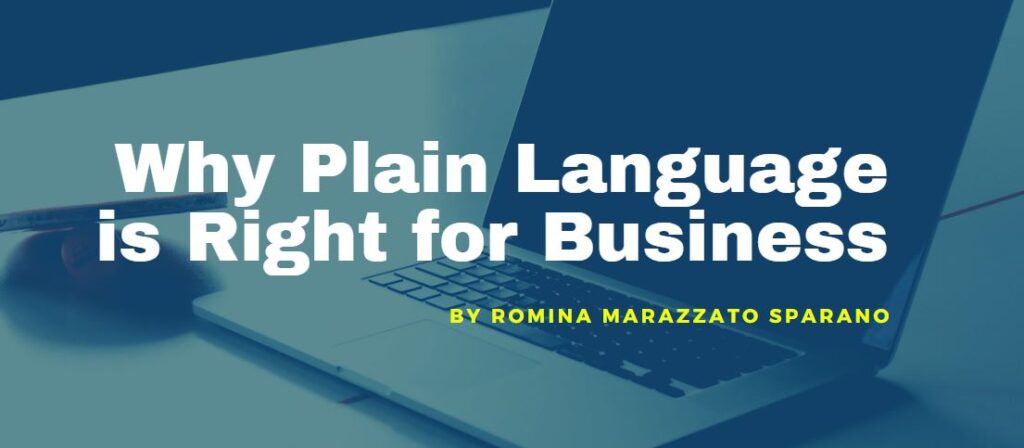Have you heard of plain language? Plain language is language that helps readers find, understand, and use the information you present to them. It is based on 5 principles that raise the bar of communication: Relevance, Accessibility, Intelligibility, Suitability, and Effectiveness (RAISE). These principles guide the writing process to produce a document that fits your readers’ needs. The process includes selecting the content, structuring it for easy navigation, wording it in a way that maximizes comprehension, styling it so your readers feel welcome, and ensuring usability by including readers’ feedback in that process. (You can read more about how these principles work here)
But, why is centering your writing around your readers important? Here are five reasons plain language is right for you:
- Strategic Advantage. Plain language inspires confidence and credibility by helping readers understand you better, which in turn shows that you care. You will gain an edge over the competition and boost your reputation.
- Time Savings: Plain language is a proven way to reduce calls for clarification, round trips and returns, and follow-ups due to incomplete or mistaken information. It saves yours and your readers’ time!
- Financial Gains: Plain and simple language pays off both from saving time—which increases efficiency—and from boosting your reputation—which increases readers satisfaction and loyalty.
- Regulatory Compliance: Plain language helps you and your readers adhere to laws, regulations, guidelines, and standards.
- Peace of Mind: Plain language is a civil right. People have the right to understand the information shared with them. By using plain language, you are fulfilling a civic duty. And it feels so good to do the right thing!
Now, don’t take my word for it, examples big and small prove the point. Consider these cases:
- Plain language reduced calls about a benefits letter at a Veterans Affairs office by 83%! (They went from 1128 a year to 192). You can read more here.
- The Plain English Campaign in the UK helped former British Aerospace (now BAE Systems) redraft a lease agreement to 1/3 of its original size, cutting negotiations from 6 months to less than 1, which helped them cash in on the $180M deal that much faster.
- In 2013, GE Aviation was consolidating digital-services from a merger of three businesses. Each had their own contracts from pre-GE days. A plain language initiative consolidated 7 different contracts into one single plain-language contract that now takes a whopping 60% less time to negotiate than their previous legalese-laden versions. Shawn Burton shares the full story here: https://hbr.org/2018/01/the-case-for-plain-language-contracts
- Ikea Ibérica issued in 2019 its first Non-Financial Report in response to Act 11/2018 on Ethical Management and Diversity. The company implemented plain language in the report to the delight of customers and managers alike. More about this story here: https://www.ikea.com/es/es/this-is-ikea/about-us/memoria-anual-ikea-pubb99d9de1
- You may remember that a decade ago Netflix was going through a rebrand when it lost almost a million subscribers virtually overnight due what even its CEO Reed Hastings described as “miscommunication” (for a while his blog on the issue could be found here: https://media.netflix.com/en/company-blog/). Netflix picked itself up and learned to communicate in plain language. You can see the results in the FAQ section of the website: https://www.netflix.com/.





